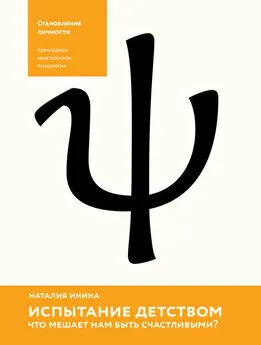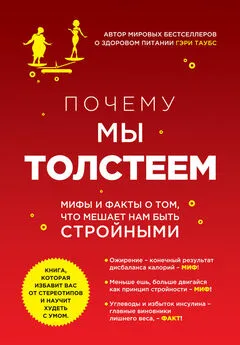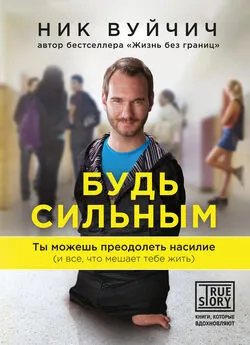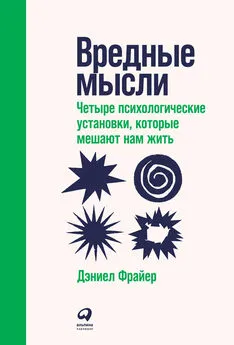Фрэнк Фаранда - Парадокс страха. Как одержимость безопасностью мешает нам жить
- Название:Парадокс страха. Как одержимость безопасностью мешает нам жить
- Автор:
- Жанр:
- Издательство:Литагент Альпина
- Год:2021
- Город:Москва
- ISBN:9785001394884
- Рейтинг:
- Избранное:Добавить в избранное
-
Отзывы:
-
Ваша оценка:
Фрэнк Фаранда - Парадокс страха. Как одержимость безопасностью мешает нам жить краткое содержание
О том, как посмотреть в лицо своим страхам, разобраться в природе их возникновения, защитить своего внутреннего ребенка, вглядеться в темноту и сквозь нее увидеть потенциальные возможности, рассказывает эта книга.
Парадокс страха. Как одержимость безопасностью мешает нам жить - читать онлайн бесплатно ознакомительный отрывок
Интервал:
Закладка:
Frijda, N. H. (1987). Emotion, cognitive structure, and action tendency. Cognition and emotion , 1 (2), 115–143.
Gallwey, W. T. (1974). The Inner Game of Tennis: The Classic Guide to the Mental Side of Peak Performance . New York: Random House.
Gentner, D., Bowdle, B., Wolff, P., & Boronat, C. (2001). Metaphor is like analogy. In Gentner, D., Holyoak, K., & Kokinov, B. (Eds.), The analogical mind: Perspectives from cognitive science (pp. 199–253). Cambridge, MA: The MIT Press.
Gibson, E. J., & Walk, R. D. (1960). "The visual cliff." Scientific American, 202 (4), 64–71.
Glassner, B. (2010). The Culture of Fear: Why Americans Are Afraid of the Wrong Things: Crime, Drugs, Minorities, Teen Moms, Killer Kids, Muta. Hachette UK.
Gleick, J. (2003 ). Isaac Newton . New York: Random House.
Gleick, J. (2010). At the beginning: more things in heaven and earth. In Bryson, B. (Ed.), Seeing further: The story of science, discovery, and the genius of the Royal Society (pp. 17–35). New York, NY: William Morrow/HarperCollins.
Golinski, J. (1988). The secret life of an alchemist. In Fauvel, J., Flood, R., Shortland, M. & Wilson, R. (Eds.), Let Newton be! (pp. 147–167). Oxford, England: Oxford University Press.
Gomes, P. J. (2000). Introduction to the second edition. In Tillich, P. The courage to be (2nd ed.) (pp. xi – xxxiii). New Haven & London: Yale University Press.
Goswami, U. (2001). Analogical reasoning in children. In Gentner, D., Holyoak, K., & Kokinov, B. (Eds.), The analogical mind: Perspectives from cognitive science (pp. 437–470). Cambridge, MA: The MIT Press.
Grassian, S. (2006). Psychiatric effects of solitary confinement . Wash. UJL & Pol'y , 22, 325.
Gregoire, C. (2014, October 22). What Americans fear most. The Huffington Post.
Greene, M. (2001) . Variations on a blue guitar: The Lincoln Center Institute lectures on aesthetic education. New York and London: Teachers College Press.
Grossman, S. (2015, October 26). What Americans fear most, according to their Google search histories. TIME Magazine.
Hall, G. S. (1907). Youth: Its education, regimen, and hygiene. Comet Content Providers.
Harrison, P. (2001). Curiosity, forbidden knowledge, and the reformation of natural philosophy in early modern England. Isis, 92 (2), 265–290.
Haugen, G. A., & Boutros, V. (2014). The locust effect: Why the end of poverty requires the end of violence. New York, New York: Oxford University Press.
Henry, J. (1988). Newton, matter and magic. In Fauvel, J., Flood, R., Shortland, M. Wilson, R. (Eds.), Let Newton be! (pp. 127–145). Oxford, England: Oxford University Press.
Himmelfarb, G. (2005). The roads to modernity: The British, French, and American enlightenments . New York: Random House.
Himmelfarb, G. (2006). The moral imagination: From Edmund Burke to Lionel Trilling. Chicago, Illinois: Ivan R. Dee, Publisher.
Hoffner, C. A., & Levine, K. J. (2005). Enjoyment of mediated fright and violence: A meta-analysis. Media Psychology , 7 (2), 207–237.
Hofstadter, D. R. (2001). Epilogue: Analogy as the core of cognition. In Gentner, D., Holyoak, K., & Kokinov, B. (Eds.), The analogical mind: Perspectives from cognitive science (pp. 499–538). Cambridge, MA: The MIT Press.
Hofstadter, D. R. (2007). I am a strange loop. New York: Basic Books.
Holmes, J. (2012). Seeing, sitting and lying down: Reflections on the role of visual communication in analytic therapy . Psychoanalytic Psychotherapy, 26 (1), 2–12.
Hublin, J. J. (2005). Evolution of the human brain and comparative paleoanthropology. In Dehaene, S., Hauser, M. D., Duhamel, J. R., & Rizzolatti, G. (Eds.), From monkey brain to human brain: A Fyssen Foundation symposium (pp. 57–71). Cambridge, MA: The MIT Press.
Hutchins, R. M. (1952), Biographical Note in Hutchins, R. M. (Ed.). (1952). Great books of the western world: Francis Bacon (Vol. 30, pp. v – vi). Chicago, Ill.: W. Benton. Encyclopedia Britannica, Inc.
Introduction [Fauvel, J. et al.], (1988). In Fauvel, J., Flood, R., Shortland, M. & Wilson, R. (Eds.), Let Newton be! (pp. 1–21). Oxford, England: Oxford University Press.
Jouvet, M. (1999) . The paradox of sleep: The story of dreaming (L. Garey, Trans.). Cambridge, MA: The MIT press. (Original work published 1993).
Jung, C. (1963) Memories, dreams, reflections . New York: Pantheon Books. См.: Юнг К. Воспоминания. Сновидения. Размышления. – Минск: Харвест, 2003.
Jung, C. G. (1917). On the psychology of the unconsciou s. Coll. wks, 7, 9–119. См.: Юнг К. Психология бессознательного. – М.: Канон Плюс, 2012.
Kaku, Michio (2014). The future of the mind: The scientific quest to understand, enhance, and empower the mind. New York, London, Toronto: Doubleday. См.: Каку М. Будущее разума. – М.: Альпина нон-фикшн, 2018.
Karlsen, C. F. (1998). The devil in the shape of a woman: Witchcraft in colonial New England. New York and London: WW Norton & Company.
Klinnert, M. D., Campos, J., Source, J. F., Emde, R. N., & Svejda, M. J. (1983). Social referencing. Emotion , 2, 57–86.
Kosslyn, S. M. (2005). Reflective thinking and mental imagery: A perspective on the development of posttraumatic stress disorder. Development and Psychopathology, 17 (3), 851–863.
Kurzweil, R. (2005) The Singularity Is Near: When Humans Transcend Biology . New York: Penguin.
Lakoff, G. (2006). The aesthetic faculty. In Turner, M. (Ed.) The artful mind: Cognitive science and the riddle of human creativity (pp. 153–170). New York, NY: Oxford University Press. См.: Лакофф Дж., Джонсон М. Метафоры, которыми мы живем. – М.: URSS, ЛКИ, 2017.
Lanius, U. F. (2014). Dissociation and endogenous opioids: a foundational role. In Lanius, U. F., Paulsen, S. L., & Corrigan, F. M. (Eds.), Neurobiology and treatment of traumatic dissociation: Towards an embodied self ( Kindle edition. pp. 81–104). New York, NY: Springer Publishing Company.
LeDoux, J. E., Cicchetti, P., Xagoraris, A., & Romanski, L. M. (1990). The lateral amygdaloid nucleus: sensory interface of the amygdala in fear conditioning. Journal of Neuroscience, 10 (4), 1062–1069.
Le Sueur, J. D. (2006). Introduction. In H. Alleg, The question (J. Calder, Trans.), (pp. xiii – xxv). Lincoln, NE: U of Nebraska Press. (Original work published 1958).
Leslie, A. M. & Frith, U. (1988). Autistic children's understanding of seeing, knowing and believing. British Journal of Developmental Psychology, 6 (4), 315–324, The British Psychological Society.
Levack, B. P. (2006). The witch-hunt in early modern Europe (3rd ed.). Great Britain: Pearson Education Limited.
Levenson, E. A. (2003). On seeing what is said: Visual aids to the psychoanalytic process. Contemporary Psychoanalysis, 39 (2), 233–249.
Liddell, H. S. (1949). Adaptation on the threshold of intelligence.
LoBue, V., & Rakison, D. H. (2013). What we fear most: A developmental advantage for threat-relevant stimuli. Developmental Review, 33 (4), 285–303.
López, R., Poy, R., Patrick, C. J., & Moltó, J. (2013). Deficient fear conditioning and self‐reported psychopathy: The role of fearless dominance. Psychophysiology, 50 (2), 210–218.
Lorincz, E. N., Jellema, T., Gómez J., Barraclough, N. Xiao, D., & Perrett, D. (2005). Do Monkeys understand actions and minds of others? Studies of single cells and eye movements. In Dehaene, S., Hauser, M. D., Duhamel, J. R., & Rizzolatti, G. (Eds.), From monkey brain to human brain: A Fyssen Foundation symposium (pp. 189–210). Cambridge, MA: MIT Press.
Lubart, T. I. & Getz I. (1997). Emotion, metaphor, and the creative process. Creativity Research Journal, Vol. 10, No.4, 285–301. Lawrence Erlbaum Associates, Inc.
Lumley, M. A., Cohen, J. L., Borszcz, G. S., Cano, A., Radcliffe, A. M., Porter, L. S., Schubiner, H. & Keefe, F. J. (2011). Pain and emotion: A biopsychosocial review of recent research. Journal of Clinical Psychology, Vol. 67 (0), 1–27. Wiley Periodicals Inc.
Mark, D. G. (2009). Waking dreams. Psychoanalytic Dialogues , 19 (4), 405–414.
Mason, G. J., & Latham N. R. (2004). Can't stop, won't stop: is stereotypy a reliable animal welfare indicator? Abstract (13: pp. S57–69) from Universities Federation for Animal Welfare, The Old School, Brewhouse Hill, Wheathampstead, Hertfordshire, AL4 8AN, UK.
McNeil, M. (1988). Newton as national hero. In Fauvel, J., Flood, R., Shortland, M. & Wilson, R. (Eds.), Let Newton be! (pp. 223–239). Oxford, England: Oxford University Press.
McKone, E. & Kanwisher, N. (2005). 17 Does the human brain process objects of expertise like faces? A review of the evidence. In Dehaene, S., Duhamel, J., Hauser, M., and Rizzolatti, G. (Eds.), From monkey brain to human brain: A Fyssen Foundation symposium (pp. 339–356). Cambridge, MA: The MIT Press.
Meier, B. P., & Robinson, M. D. (2005). The metaphorical representation of affect. Metaphor and symbol , 20 (4), 239–257, Lawrence Erlbaum Associates, Inc.
Merchant, B. (2013, January 16) The 150 things the world's smartest people are afraid of. [Blog post] Retrieved from motherboard.vice.com/en_us/article/pgg4yg/what-150-of-the-worlds-smartest-scientists-are-worried-about.
Minsky, M. (1988). The society of mind. New York: Simon and Schuster. См.: Минский М. Сообщество разума. – М.: АСТ, 2018.
Mobbs, D., Marchant, J. L., Hassabis, D., Seymour, B., Tan, G., Gray, M., Petrovic, P., Dolan, R. J., & Frith, C. D. (2009). From threat to fear: the neural organization of defensive fear systems in humans. Journal of Neuroscience, 29 (39), 12236–12243.
Moller, V. (2019). The map of knowledge. A thousand-year history of how classical ideas were lost and found. New York, NY: Doubleday.
Muris, P., Merckelbach, H., & Collaris, R. (1997). Common childhood fears and their origins. Behaviour research and therapy, 35 (10), 929–937.
Neuberg, S. L., Kenrick, D. T., & Schaller, M. (2011). Human threat management systems: Self-protection and disease avoidance. Neuroscience & Biobehavioral Reviews, 35 (4), 1042–1051.
Norman, J. (1989). The analyst's visual images and the child analyst's trap. The Psychoanalytic study of the child, 44 (1), 117–135.
Oden, D. L., Thompson, R. K., & Premack, D. (2001). Can an ape reason analogically? … In Gentner, D., Holyoak, K., & Kokinov, B. (Eds.), The analogical mind: Perspectives from cognitive science (pp. 471–497) Cambridge, MA: The MIT Press.
Panksepp, J. (Ed.). (2004). Textbook of biological psychiatry. Hoboken, NJ: Wiley-Liss.
Panksepp, J. & Biven, L. (2012). The archeology of mind: Neuroevolutionary origins of human emotions . New York: Norton & Company.
Park, J. H., Schaller, M., & Crandall, C. S. (2007). Pathogen-avoidance mechanisms and the stigmatization of obese people. Evolution and Human Behavior, 28 (6), 410–414.
Patrick, C. J., Fowles, D. C., & Krueger, R. F. (2009). Triarchic conceptualization of psychopathy: Developmental origins of disinhibition, boldness, and meanness. Development and psychopathology, 21 (03), 913–938.
Читать дальшеИнтервал:
Закладка:










